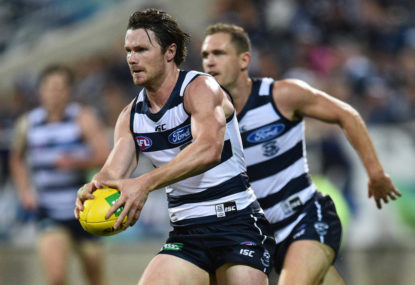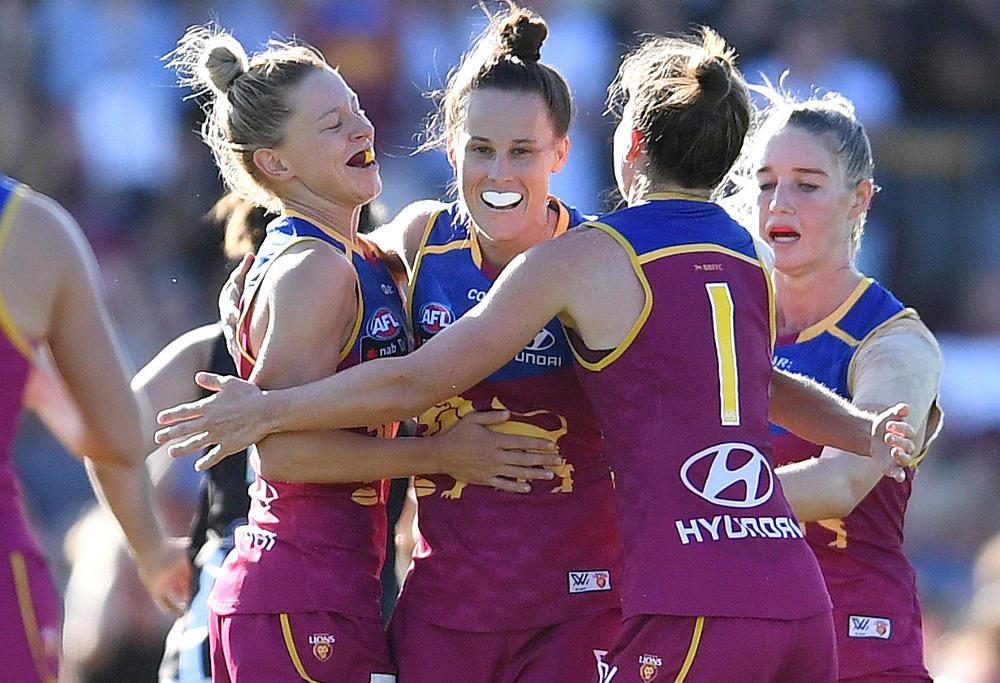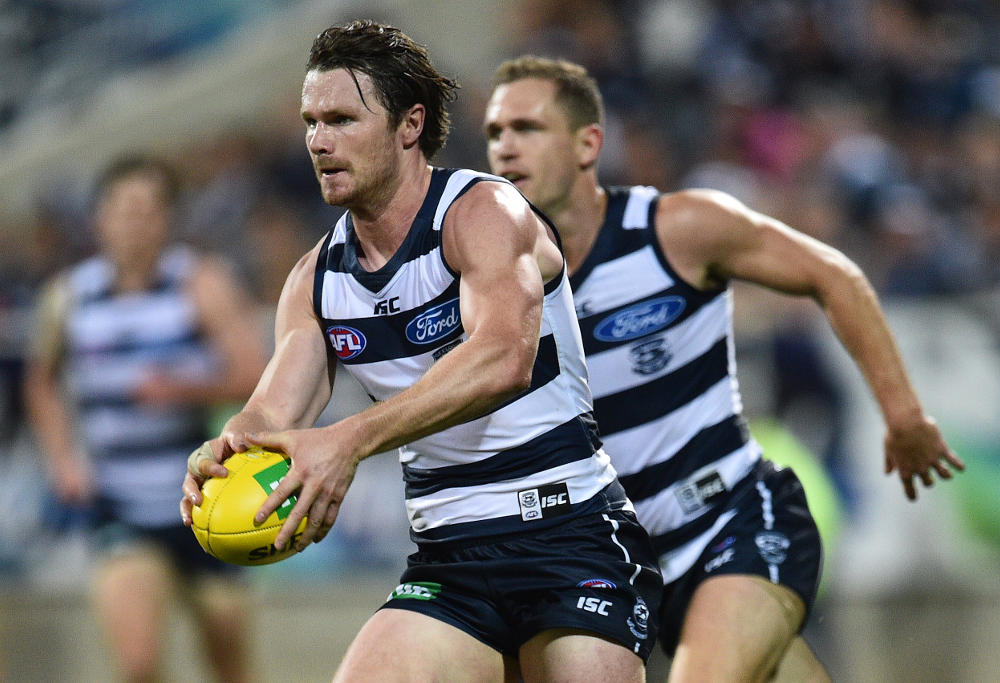The crucial cogs of AFL's Round 7: Which players need to be the difference makers?
We’re taking a look at one player from each team that needs to make a difference this week, starting with the ANZAC Day games.

There are too many topics that don’t deserve an entire article but that don’t deserve to be ignored, either. So they’ve ganged together and taken a time share on Bondi Beach alongside Mr and Mrs Franklin, waiting for your attention.
I heard the advert for Channel Nine’s Future Stars last weekend, where venerable retired coach Kevin Sheedy was referred to as “the father figure of (Australian) football”. And an argument could absolutely be made that if footy needs a father figure, Sheedy would be on the very short list.
But are there other family members out there, waiting to be recognised? It’s not hard to imagine Lions legend Leigh Matthews as the grumpy uncle of Australian football, for example.
Or Bulldogs matriarch Susan Alberti as the kindly auntie who waterskiis and takes two week excursions in the Sumatran jungles. Alastair Clarkson is the oldest son who made good at law school and all the older generation brags about at family reunions. You get the idea.
Add your nominations to the comments below this article. Just be very careful about your nominations for the drunk uncle, please.
Saw Ryan’s piece Thursday about coaches under the gun, and it’s hard not to play the prediction game in March. But when it involves the professional livelihood of (in this case) men who have spent their lives in footy, we need to be careful when causing people to think in terms of firing them before a game has been played in earnest in 2017.
However, Ryan gives a very objective and fair evaluation of the situation each of his five subjects find themselves in without incriminating any of them as poor coaches. With very rare exceptions, you don’t become an AFL head man without being an excellent coach. Most often the situation becomes one where the message has started to fall on numb or deaf ears, or perhaps the circumstances around a team have reached a point where a change has to be made simply for the sake of making a change – and the coaches are the easiest to dispose of.
Having said that, the quickest way to lose your head coaching job in professional sports is to lead a team which doesn’t meet the public perception of expectations, combined with a lack of built-up ‘equity’ of goodwill for previous accomplishments or circumstances. So, who’s the most likely to fit that bill?
I think of the five coaches Ryan named, the one I’d worry the least about is Brad Scott. Who seriously expects a finals season out of the ‘Roos this year, after throwing the baby out with the old water last spring?
The key is the word ‘expectations’. Brisbane could go one and 21 this season and Chris Fagan would get another year to put things back together. On the other paw, if the Giants were to go, say, one and six out of the gate, Leon Cameron might worry a bit. (Not seriously, but you get my point.)
Which teams are likeliest to have ‘itchy trigger fingers’? You can always look Magpie way for higher than reasonable expectations, and since Collingwood won’t be achieving anything this year above what they have for the last half-decade, and Nathan Buckley’s contract is up at year’s end, it would seem that he has the warmest tush in the competition in 2017.
But Ryan’s proposition that Ken Hinckley may be the first gone, even if he’s not the most endangered, is rather insightful. While Port has a better chance of success than Collingwood this year, they are more likely to pull the plug on their coach early if the powers that be think they have the horses to make finals (and a Bulldog-like run) if they’re floating around 10th or 12th and have any belief that the players have tuned Ken Hinkley out.
Fair? Probably not. No one ever claimed it was…

It’s always fun to argue about the viability of women’s athletics while trying not to sound like you’re sexist or a feminist (depending on the side of the argument you’re on). We dance around with words like “athleticism” and “inclusion” and “role model”, but in the end, we live in a capitalist society and you can only subsidise a sub-standard or unpopular product for so long.
Attendance and ratings have both been above expectations, even those of the folks hawking the product in the first place. When you go from scheduling your opener in a stadium that seats two thousand, and on game day you’re locking the gates after twelve times that have entered, you underestimated.
The men’s teams have continually expressed positive feedback on the relationship between the two teams under the club’s banner, and the cross-pollination seems to be helping in both directions. It’s not an exaggeration to say that the presence of the women’s league and the success of its women’s representative may literally save the Brisbane Lions franchise from either irrelevance or departure.
The competitive product is not unlike a high-level youth or mid-tier men’s game. The women are not going to produce three-digit scores, especially in 60 minute games. However, the games have been at least as tight as the male JLT scores, with all four games ending within a goal.
What you won’t get are soaring Cyril Rioli marks or 70-meter-on-the-fly Buddy bombs. (At least not yet.) What you will get is skill levels that increase visibly round by round, competitive efforts unbeaten at any level, and an intimacy with the fans that the MCG can’t offer.
Finally, here’s a sign of health that we haven’t really valued enough yet: look at the variety of sports these women are coming from to be a part of the AFLW.
The top athletes in virtually every sport that women can make a living at are coming to play footy in front of non-paying crowds for five-figure salaries in 35-degree heat. They see the value in this, and they’re betting their athletic careers on it.
It’s not going to match the AFL in popularity – but it was never intended to. It just has to be able to stand on its own feet, and so far, the signs are that it can.

In another article, I have developed a numerical system for individual players.
Not surprisingly, it also had Paddy Dangerfield as the AFL player of the year. The usual voting slants heavily in favour of the high-disposal midfielders – our system is more positionally balanced, with Sydney’s Lance Franklin and Luke Parker coming in second and third respectively last year.
What’s interesting is our forecast for the 2017 season.
1. Patrick Dangerfield (Geelong)
2. Sam Mitchell (West Coast)
3. Nat Fyfe (Fremantle)
…with Adam Treloar (Collingwood), Robbie Gray (Port) and Rory Sloane (Adelaide) as the next three possibilities.
Now, here’s the interesting part. Look at those three men in the top three slots. One switched teams last year, the second switched teams this year, and the third may very well switch next year.
It casts a light on free agency that needs to be considered. How easy should it be for a player to switch teams against their team’s wishes, or for a team to trade a player against their wishes?
As an American, I can tell you it’s bizarre to see someone like Cam McCarthy say to the team which drafted him and own his rights, “Sorry, not going to play for you. Trade me to the west coast. End of conversation,” and they essentially have to do it.
We have free agency in the US – American baseball invented it, in fact – but in no sport do the players have as much control as they do in footy.
Is that good or bad? I don’t know. October is always disconcerting to me to watch, but on the other hand, once the trade period is over, the teams still look about 80 per cent the same as they had. It’s probably just a sign of my getting old.